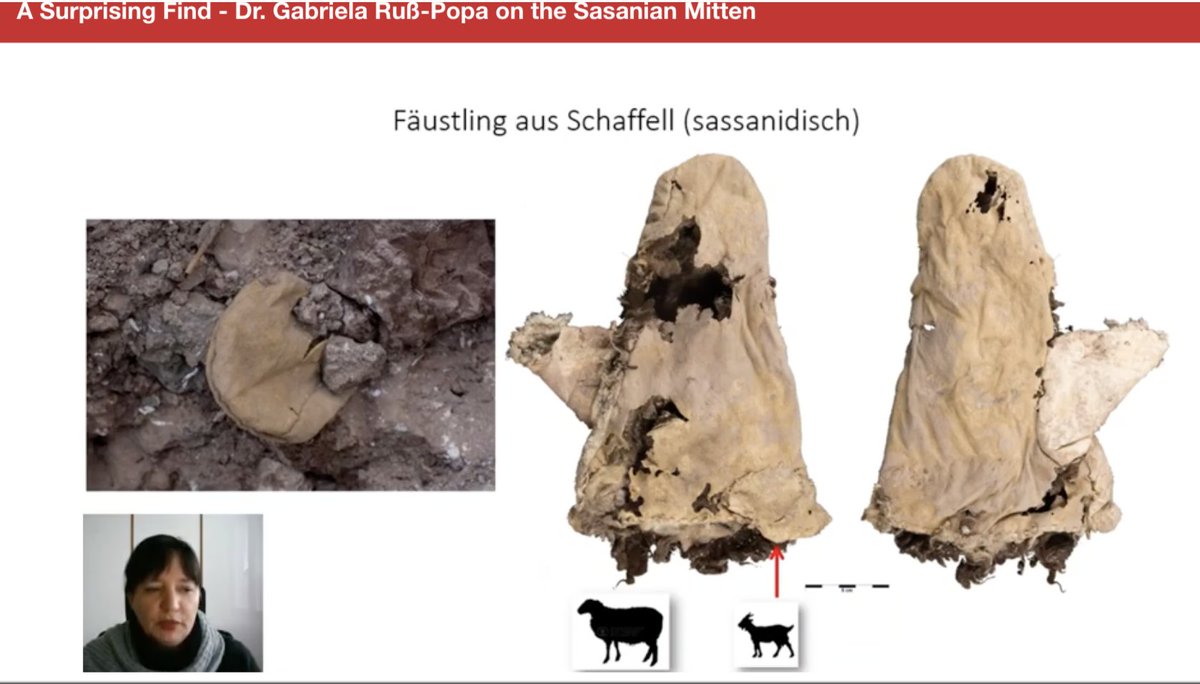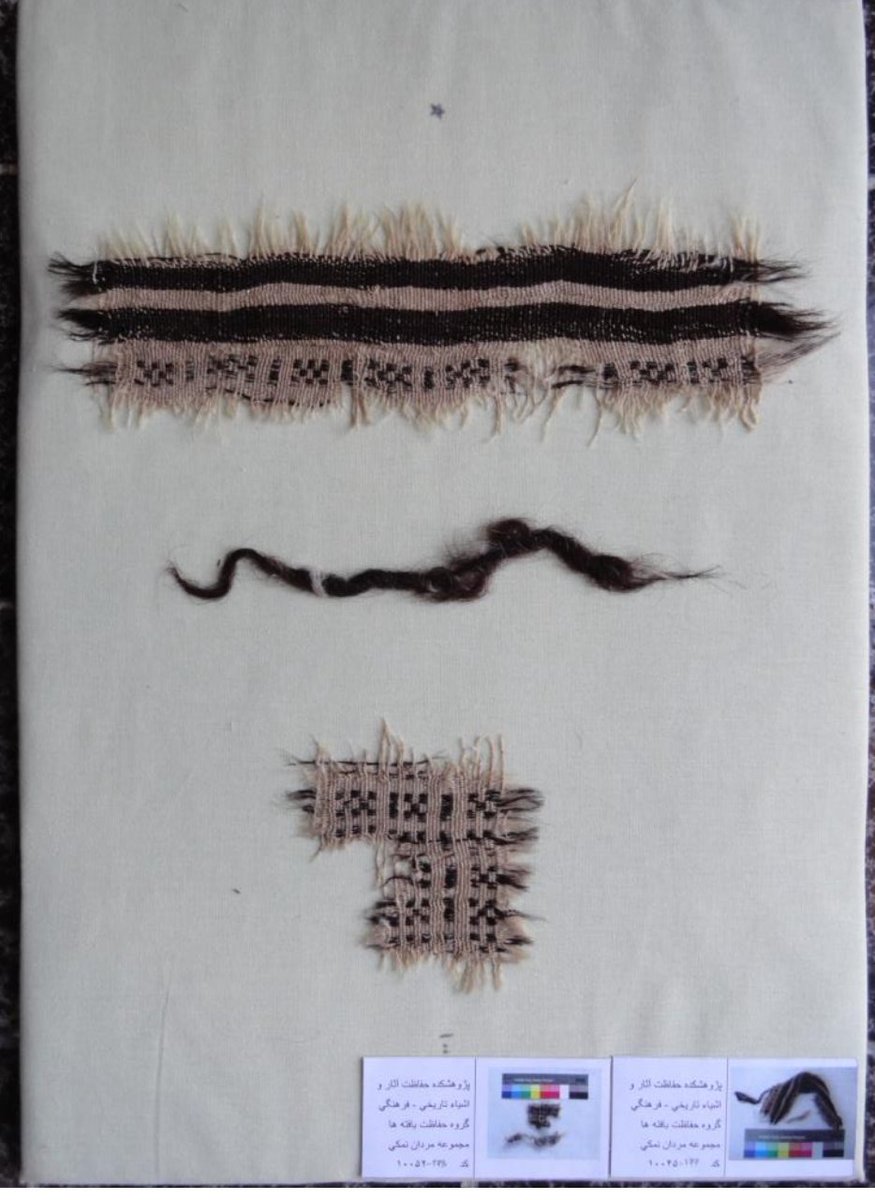What we've learned so far from salt mummies in #Iran , Chehrabad salt mines, Zanjan (with focus on textiles)
By 2010, remains of six men had been discovered, most of them accidentally killed by collapse of galleries where they were working
This site is super important
⤵️🧵
By 2010, remains of six men had been discovered, most of them accidentally killed by collapse of galleries where they were working
This site is super important
⤵️🧵

We should remember these are simpler, miner clothing suited for the job. So we can't jump to simplifying Sasanian, Achaemenid... clothing to all look like this!
1) #Achaemenid Clothing
1) #Achaemenid Clothing

Salt man 4: we have digital reconstructions of various aspects of clothing and accessories which I posted about before
Also see previous thread on Achaemenid clothing:
⤵️


Also see previous thread on Achaemenid clothing:
https://twitter.com/On_Persia/status/1522291510561148929?s=20&t=scE4TDyoRhUw9L73VyXMRA
⤵️



Details of Achaemenid textiles, including all needed to recreate these: both pants and tunic
Published: chapters in Ancient Textile Production from
an Interdisciplinary Perspective, 2022: ch. 18: 3D Visualization of 2400-Year-Old Garments of Salt Man 4 from Chehrābād, Iran
⤵️



Published: chapters in Ancient Textile Production from
an Interdisciplinary Perspective, 2022: ch. 18: 3D Visualization of 2400-Year-Old Garments of Salt Man 4 from Chehrābād, Iran
⤵️




Achaemenid textile pieces and patterns
Also see where I previously included these:
⤵️


Also see where I previously included these:
https://twitter.com/On_Persia/status/1535458690354106368?s=20&t=scE4TDyoRhUw9L73VyXMRA
⤵️



Achaemenid era shoes. Looking at numerous depictions, we could say this was the average footwear of most people. Of course footwear of king and royalty would have been more fancy in some ways
Also see:
⤵️



Also see:
https://twitter.com/On_Persia/status/1502734746744496130?s=20&t=scE4TDyoRhUw9L73VyXMRA
⤵️




You can look at the digital exhibition at:
death-by-salt.com
Its catalogue has been published, recently in Persian too (August 2022): مرگ در نمک
death-by-salt.com
Its catalogue has been published, recently in Persian too (August 2022): مرگ در نمک

Sasanian boot
I couldn't tell if this is the same as the one in some older papers labeled "Parthian".
In any event we have one other potentially Parthian-era boot from Dura-Europos (photo 4)
⤵️



I couldn't tell if this is the same as the one in some older papers labeled "Parthian".
In any event we have one other potentially Parthian-era boot from Dura-Europos (photo 4)
https://twitter.com/On_Persia/status/1502740721937354756?s=20&t=scE4TDyoRhUw9L73VyXMRA
⤵️




Sasanian-era textiles, analysis of colours, dyes, weaving for some
I understand from one source the German team may analyze other textiles in future. We are still analyzing so many of the findings from the site! It's so cool!!
⤵️



I understand from one source the German team may analyze other textiles in future. We are still analyzing so many of the findings from the site! It's so cool!!
⤵️




Sasanian-era textiles, analysis of colours, dyes, weaving for some
Textiles all the way from 20th C were also found at the site, as it was still used as a mine for centuries after Arab invasion of Iran
⤵️



Textiles all the way from 20th C were also found at the site, as it was still used as a mine for centuries after Arab invasion of Iran
⤵️




Sasanian era mittens
Mittens/gloves do not appear to have been common in ancient Iran
⤵️



Mittens/gloves do not appear to have been common in ancient Iran
https://twitter.com/On_Persia/status/1553363336498216960?s=20&t=scE4TDyoRhUw9L73VyXMRA
⤵️




Also see these videos, mostly in German
⤵️
⤵️
And these two papers among many others:
Textiles from Douzlakh Salt Mine at Chehr Abad, Iran: A Technical and Contextual Study of Late pre-Islamic Iranian Textiles, 2011, Hadian et al.
Analysis of dyes in textiles from the Chehrabad salt mine in Iran, 2014, Mouri et al.
⤵️
Textiles from Douzlakh Salt Mine at Chehr Abad, Iran: A Technical and Contextual Study of Late pre-Islamic Iranian Textiles, 2011, Hadian et al.
Analysis of dyes in textiles from the Chehrabad salt mine in Iran, 2014, Mouri et al.
⤵️
Also most recently published as chapter in book: Ancient Textile Production from an Interdisciplinary Perspective, 2022: Ch 4: Sassanid Dyes from Ancient Persia – Case Study Chehrābād in Northern Iran
#Sasanian tunic & leggings
Again, everything necessary for modern recreation



#Sasanian tunic & leggings
Again, everything necessary for modern recreation




#Sasanian tunic & leggings
Also see Clothing in ancient Iran: Sasanian period!
And Clothing in ancient Iran: Parthian/ Arsacid period:
⤵️



Also see Clothing in ancient Iran: Sasanian period!
https://twitter.com/On_Persia/status/1530716335029862400?s=20&t=scE4TDyoRhUw9L73VyXMRA
And Clothing in ancient Iran: Parthian/ Arsacid period:
https://twitter.com/On_Persia/status/1525478363909038080?s=20&t=scE4TDyoRhUw9L73VyXMRA
⤵️




Leather bags:
https://twitter.com/On_Persia/status/1564510580945424384?s=20&t=UXEULR3mbFuwyak8MqZTKQ
And I would again emphasize similarities in construction of tunics, robes... across much of Eurasia
1-3: from modern China
4: specifications of Sasanian-era salt mummy tunic
More excavations may reveal even more from the Chehrabad salt mines
⤵️



1-3: from modern China
4: specifications of Sasanian-era salt mummy tunic
More excavations may reveal even more from the Chehrabad salt mines
⤵️




Also compare to Sasanian-era or similar, mostly riding attire from Egypt and other areas
But now we have an excavated Sasanian-era tunic from the salt mummies to help us better understand various styles of tunics and other clothing



But now we have an excavated Sasanian-era tunic from the salt mummies to help us better understand various styles of tunics and other clothing




• • •
Missing some Tweet in this thread? You can try to
force a refresh

































































